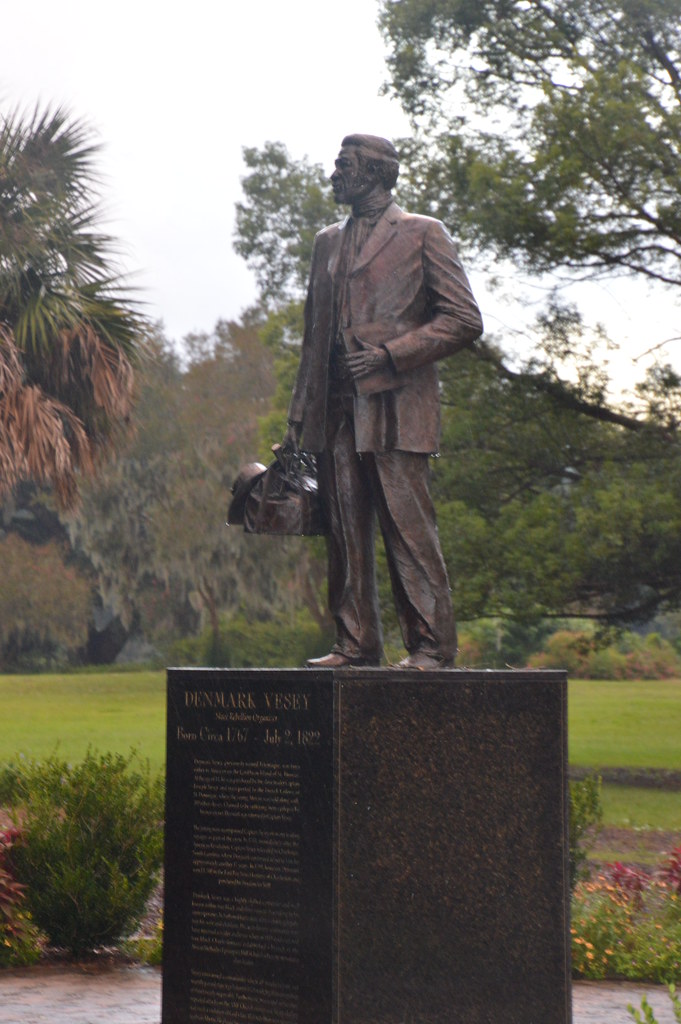Afrofuturism
06.08.2024
Features of the Vesey Estate Parliamentary System - Legislative Branch
1. The Vesey Republic's Estate parliamentary system of government the legislative branch is the supreme branch of government. This is its defining feature.
The Vesey Republic's legislative branch will conduct its business through a unicameral (one house) sitting of Parliament. The Estate Parliament is composed of representatives or members (MPs) that are elected by citizens of the country. The primary job of members of Parliament is to create and pass laws.
2. In Vesey's Estate parliamentary system of government, the members of parliament, rather than citizens, elect the First Prime Minister, who will serve as the Head of Government and performs the ceremonial and symbolic functions as Head of State of the Vesey Republic. The Prime Minister and the and the heads of his executive cabinet are all elected members of the Vesey Estate parliament.
The First Prime Minister as the Head Government oversees Parliament. This creates an and overlap or what New Black Nationalists call a "fusion government" between the executive and the legislative branches of government.
3. The Prime Minister has no official length of term and is not subject to term limits. Thus, so long as Parliament is satisfied with performance and leadership, the Prime Minister remains in his or her position.
Should it ever be called for, members of parliament will use a majority vote known as a “vote of no-confidence” in order to remove a Prime Minister from office.
The decision to establish a UK Supreme Court in 2009, which ends the House of Lords function as the UK's final court of appeal.
Parliamentary sovereignty means that parliament is superior to the executive and judicial branches of government and can therefore enact or repeal any law it chooses.
“Parliament…has, under the English constitution, the right to make or unmake any law whatsoever; and, further, …no person or body is recognized by the law of England as having the right to override or set aside the legislation of Parliament.”
In theory, the UK parliament could enact legislation that oppresses 95% of the population if it chose to do so, however, the political consequences of such a measure mean that in practice this is very unlikely to happen.
Parliamentary sovereignty, also known as parliamentary supremacy or legislative supremacy, is a fundamental concept in the constitutional law of some parliamentary democracies. Let’s delve into its significance:
Definition:
Parliamentary sovereignty asserts that the legislative body (parliament) holds absolute sovereignty and is supreme over all other government institutions, including the executive and judicial bodies.
It means that parliament has the authority to create or end any law without being bound by written laws (and sometimes even a constitution) or legal precedents.
Parliament can change or repeal any existing legislation.
Supreme Legal Authority: Parliamentary sovereignty makes parliament the highest legal authority within a country.
Unchallengeable Legislation: Generally, courts cannot overrule parliamentary legislation.
Future Flexibility: No parliament can pass laws that future parliaments cannot alter.
Judicial Review: While some countries contrast parliamentary sovereignty with the separation of powers, where external judicial review can invalidate laws, the legislative body still retains sovereignty by its ability to amend the constitution (often requiring a greater majority, such as 2/3 of votes) 3.
4. A simple fifty plus one majority vote of Parliament is required to pass laws. Then, they are then signed into legislation by the Prime Minister, who does not have veto power. This is contrary to the presidential system. In the case of disagreement, the Prime Minister can return a bill to Parliament. However, a majority vote by Parliament can veto that return.
5. In the Vesey Estate parliamentary system, the High Court of Justice can declare a law as unconstitutional. This would be done if it were to pose violations against the republic's unwritten constitution.
However, some countries, such as Great Britain and New Zealand, lack provisions for judicial review. In these countries, the only check against the legislature is the results of the next election season.
6. The First Prime Minister also defines and carries out the foreign policy of the Vesey Republic. An example of some foreign powers would be national defense and military command. The elected president exercises these powers. Some countries that follow this system are Lithuania, Bangladesh and France.
7. Though members of Parliament hold their positions in office by each election season, they can be turned out of office. If one respective party loses the majority hold over members of Parliament, they can be removed. Other members of Parliament, as well as the Prime Minister, are then able to vote out a member of Parliament. A no-confidence vote accomplishes this.
8. The Vesey Republic Estate parliamentary system does not deploy a Checks and Balances system. Therefore, the parliamentary system tends to be more efficient because the First Prime Minister is typically a member of the largest or majority party leading the parliament and because gridlock cannot delay the procession of business.
9. Depending on the rules of voting within a country, the political representation within members of Parliament may consist of one party. It may also be proportionally representative of the nation. If a country follows a “first-past-the-post” (FPTP) principle, Parliament will most likely consist of one or two majority political parties. An FPTP is a principle in which candidates with the most ballots win a seat. However, some countries follow a rule of proportional representation. This means that the political makeup of Parliament members is appropriate to that of the nation.
The executive is responsible for creating policy, putting proposals for laws to the legislature, and putting laws into effect.
We call this the government.
In devolved nations (Scotland, Wales, and Northern Ireland) the executive includes the First Ministers and governments of the devolved nations.
The judiciary decides whether laws are being followed or if they have been made properly.
This is done through a system of courts and tribunals.
In the UK, the judiciary is made up of the judges and officers of the courts of law. These are overseen by the Supreme Court, the highest court in the UK. The courts in the UK can decide on conflicts between state bodies, between the state and individuals and between individuals. In the UK we have 3 legal systems; one each for England and Wales, Scotland, and Northern Ireland. The Supreme Court is the top court for all these systems.
Before the reforms of 2005, the House of Lords in the United Kingdom held significant judicial powers. Here are some key aspects of their role:
Appellate Function:
The House of Lords served as the highest court of appeal in the UK legal system.
It heard appeals from lower courts, including cases related to civil and criminal matters.
Decisions made by the House of Lords were legally binding and had a substantial impact on legal precedents.
Judicial Committee of the House of Lords:
The House of Lords operated as the Judicial Committee.
It reviewed cases from various parts of the British Empire and Commonwealth.
The Judicial Committee provided authoritative interpretations of legal issues and constitutional matters.
Law Lords:
The House of Lords included a group of senior judges known as Law Lords.
These Law Lords were appointed based on their legal expertise and experience.
They actively participated in legal debates, deliberations, and judgments.
Legislative and Judicial Functions Combined:
The House of Lords had a dual role: legislative (as part of Parliament) and judicial (as the highest court).
This combination of functions was unique and sometimes led to tensions between its legislative and judicial roles.
Hereditary Peers:
Before the reforms, the House of Lords included a significant number of hereditary peers.
These hereditary peers inherited their titles and had the right to participate in legislative and judicial proceedings.
Their presence added an element of tradition but also raised questions about democratic legitimacy.
The Constitutional Reform Act 2005 brought significant changes to the House of Lords. It separated the judicial function from Parliament, created the UK Supreme Court, and ended the Lord Chancellor’s combined role as head of the judiciary, a member of the executive, and Speaker of the House of Lords12. These reforms marked a crucial shift in the UK’s legal landscape, enhancing the independence and clarity of the judiciary. 🏛️
Why was it introduced (political sociological context)?
The Constitutional Reform Act of 2005 [‘the Act’] prescribed numerous changes in the judiciary of the United Kingdom [‘UK’] as well as the roles of the Houses of Parliament. The Act’s introduction must be situated on the backdrop of political intent to reform the historical constitutional mixture of legislative, judicial and executive powers being vested in the House of Lords, with growing concerns for instituting stricter separation of powers in UK government. The reform was further motivated by legal concerns regarding the compatibility of the current vestiges of powers in the office of the Lord Chancellor with fair trial rights under the European Convention on Human Rights. Thus, on this backdrop, a bill which highly restricted the jurisdiction of the House of Lords and completely abolished the office of the Lord Chancellor was proposed before the House of Lords in 2004. It was subject to heavy debates and amendments by the House of Lords and, eventually, was approved while retaining the role of the Lord Chancellor with limitations.
What was the aim of the Act (legal context)?
The primary aim of the Act is reform the UK institutional makeup in order to allow for a stricter separation of powers and divide the mixture of executive, judicial and legislative powers in the same unelected body. Accordingly, the Act reformed the office of the Lord Chancellor, introduced the Supreme Court of the United Kingdom, and regulated the appointment of judges outside of the auspices of the House of Lords.
What main changes did it make to the law?
The Act’s primary changes pertained to the office of the Lord Chancellor and the UK judiciary. Firstly, the Act severely restricted the powers of the Lord Chancellor. Prior to the Act, the Lord Chancellor, the senior officer of the House of Lords, was appointed by convention, without express procedures or qualifications thereto. However, the Act introduced provisions concerning the terms and qualifications of appointment of the Lord Chancellor. Further, the Act restricted the powers of the Lord Chancellor.
In altering the functions of the Lord Chancellor and restricting the jurisdiction of the House of Lords, the Act creates the Supreme Court of the UK as the new superior appellate court of the UK, replacing the House of Lords. The creation of the Supreme Court is supplemented by provisions concerning the appointment of its judges and its administration as separate and independent from the House of Lords.
Further, the Act compounds the abolition of the Lord Chancellor’s judicial functions by introducing a statutory recognition of judicial independence for the first time in the history of UK laws. The Act expressly recognises the rule of law and the continuing judicial independence of UK courts, barring members of the legislative and executive to influence judicial decisions or have any access to judges. This reform ensured, for the first time in UK legislative history, a formal recognition of the constitutional separation of powers.
Key Sections
The Act’s key areas concern the Office of the Lord Chancellor as well as the Supreme Court and appointment of judges in the judiciary. Firstly, affirming the existing constitutional principle of the rule of law (s1), the Act institutes a number of arrangements to modify the office of the Lord Chancellor. For example, the Act modifies the appointment of the Lord Chancellor by introducing the requirement that the Prime Minister may only recommend a person for appointment as Lord Chancellor if so “qualified by experience.” (s2). The Act further aligns the role of the Lord Chancellor with judicial independence, stipulating a provision that ensures that the Lord Chancellor must uphold the continued independence of the judiciary (s3), of which includes the Supreme Court, other established UK courts, and any international court (s3(7)). Schedule 4 of the Act further provides for the transfer and/or modification of functions to and from the office of the Lord Chancellor.
Secondly, the Act creates a framework for a Supreme Court as an independent judicial body. In prefaces the creation of the Supreme Court with a statutory recognition of “continued judicial independence” of the courts (ss3-4). The Act stipulates that “there is to be a Supreme Court of the United Kingdom” (s23(1)). The Act further stipulates provisions for the composition of this Supreme Court, providing that the Court shall consist of 12 judges appointed by Her Majesty (s23(2)), and that persons shall only be qualified to be appointed as a Supreme Court judge if they have held high judicial office for a minimum of two years or been a qualifying practitioner for a minimum period of 15 years (s25(1)). The Act prescribes comprehensive procedures for the selection process of judges and clearly designates the role of the Lord Chancellor thereto (ss26-31). The Act also expressly recognises the need to “encourage diversity” in the appointment of judges (s64). Further, the Act also contains provisions on the terms of appointments on the Court, including the requirement to take a judicial oath (s32), tenure (s33), salaries and allowances (s34), resignation and retirement (ss35-37), and others. The Act further expressly designates the jurisdiction of the Supreme Court as the superior appellate court of the UK (s40), its relation to other Courts (s41), its composition (ss42-43), its practice and procedure (ss44-47), and other procedural aspects in its administration.
Share this: Facebook Twitter Reddit LinkedIn WhatsApp ⚖️
Culture
Legislative
Vesey Government
Legislative
Executive
Judiciary
Women's Region
Defense
Bill of Rights
Bill or Rights
Draft Program for A Majority Black-Led Nation-State
The Vesey Estate Parliament Legislative Branch
lllll
Vesey Republic Home
The Vesey Republic
Black Nationalist - Fanonist - Womanist
Denmark Vesey, Charleston, South Carolina
Hampton Park
Juneteenth
2024
On Saturday June 8, 2024, the New Black Nationalist Network will release its Vesey Government Model for
a future Black nation-state.
To Read Statement >
Please come back and visit this page on June 8, 2024, for the final draft. You can also drop in at the new Vesey Republic of Letters page for commentaries and essays on creating a new Black nation-state. To contribute to the final draft please send your comments and links to:
@veseyrepulbic
Available Now
> Vesey Republic Estate Parliamentary System
> Vesey Republic of Letters
> NBN's Governance Theory of Elasticity
Coming on Juneteenth 2024
Declaration of Independence
Declaration (Bill) of Rights
Vesey Estate Parliament
Women's Autonomous Region
Governance Theory
@veseyrepublic
NewBlackNationalism.com
Women-Led Autonomous Region




